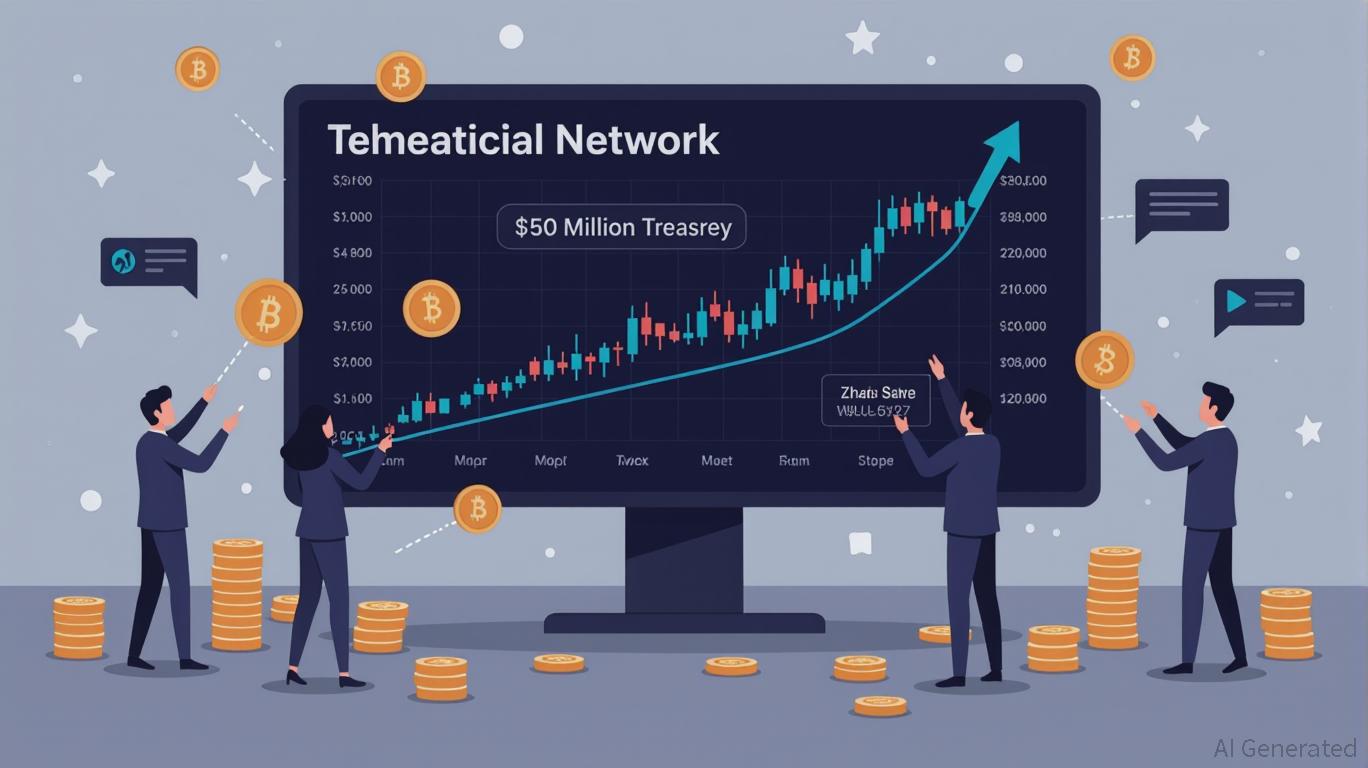Shutdown-Related Data Shortfalls Lead Fed to Delay Reducing Rates
- U.S. government shutdown ended Nov 12, 2025, but left critical economic data gaps for Fed's December rate decision. - 1.4 million furloughed workers and $11B lost output highlight shutdown's severe economic impact despite mixed private-sector data. - Fed faces delayed/missing jobs reports and CPI data, increasing likelihood of rate cut pause as policymakers emphasize data caution. - Market expectations shifted from 95.5% to 53.6% chance of December cut, reflecting demand for evidence-based monetary polic
After 43 days, the United States ended its longest-ever government shutdown on November 12, 2025, when Congress approved a bipartisan spending package to restore federal operations. Although this broke the political deadlock and eased immediate economic worries, it created a new challenge: a significant lack of essential economic data for Federal Reserve officials as they approach their December meeting. With key reports on jobs and inflation either postponed or possibly lost, the Fed must now navigate with limited visibility,
The shutdown had a major economic impact. Roughly 1.4 million federal employees were either furloughed or went without pay for a month and a half,

The Fed’s December gathering will proceed without access to the September and October employment numbers, the October inflation data, and other vital statistics.
Financial markets have already adjusted their outlook. By November 13,
The repercussions of the shutdown go beyond monetary policy.
Disclaimer: The content of this article solely reflects the author's opinion and does not represent the platform in any capacity. This article is not intended to serve as a reference for making investment decisions.
You may also like
Ethereum Latest Updates: Major Institutions Support Ethereum's Supercycle, While Technical Experts Raise Concerns
- Tom Lee predicts Ethereum's "supercycle" driven by institutional adoption and DeFi growth, sparking market debate over valuation risks. - SharpLink Gaming's 1,100% revenue surge and $200M ETH allocation to Linea highlight bullish institutional strategies amid price volatility. - Technical analysts warn ETH's $3,500 support is critical after breaking below key channels, with $37B daily volume reflecting mixed momentum. - Growing institutional demand contrasts with critics' concerns over centralization ris

The Rapid Rise of ZEC (Zcash) Value: An In-Depth Technical and Strategic Analysis
- Zcash (ZEC) surged 66.55% in November 2025, peaking at $683.14, driven by treasury initiatives, privacy innovations, and institutional investments. - Cypherpunk Technologies' $50M treasury and Zashi Wallet's privacy swaps boosted demand, while Winklevoss Capital and Grayscale added $72.88M in institutional backing. - Technical indicators show overbought conditions (RSI 94.24) but bullish momentum persists, with derivatives markets holding $1.13B in open interest and a 1.06 long-to-short ratio. - Zcash's

ICP Caffeine AI's Rising Popularity: Ushering in a New Age for Blockchain Investors and AI-Powered DeFi
- Dfinity's ICP Caffeine AI bridges blockchain and AI in 2025, enabling non-technical users to build dApps via natural language prompts. - The platform saw 30% ICP token price growth and $237B TVL in Q3 2025, but faced 22.4% dApp usage decline amid market saturation. - Investors prioritize infrastructure projects like ICP Caffeine AI for AI-driven DeFi scalability and security, contrasting with speculative token trends. - Regulatory scrutiny and user retention challenges persist, but enterprise adoption of

Internet Computer's Rapid Rise: Could This Signal the Next Major Change in Blockchain?
- Internet Computer (ICP) surged in 2025 via DeFi upgrades like Flux (scalability), Stellarator (sharding), and Chain Fusion (cross-chain interoperability with Bitcoin/Ethereum). - Q3 TVL spiked 22.5% to $1.14B, with ICP price rising 45% to $5.20, driven by institutional adoption of AI-tokenized infrastructure and 2,000+ new developers. - Despite growth, DApp engagement dropped 22.4%, highlighting a gap between technical advancements and user adoption, while $12B TVL losses from hacks in November 2025 pose
